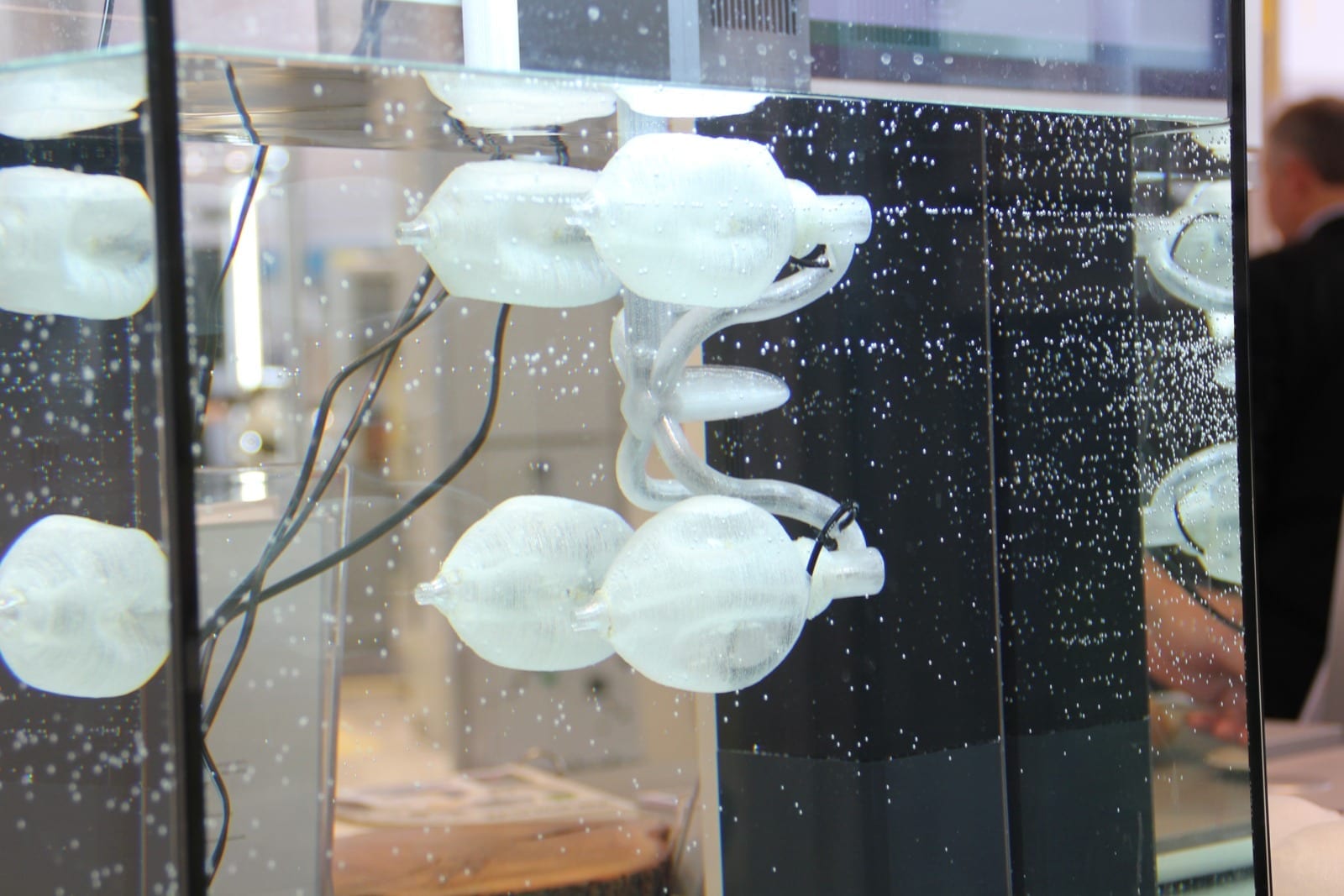
When it comes to public access, the tree of life has holes.
A new study co-authored by University of Florida researchers shows about 70 percent of published genetic sequence comparisons are not publicly accessible, leaving researchers worldwide unable to get to critical data they may need to tackle a host a problems ranging from climate change to disease control.
Scientists are using the genetic data to construct the largest open-access tree of life as part of the National Science Foundation’s $5.6-million Assembling, Visualizing and Analyzing the Tree of Life project. Understanding organismal relationships is increasingly valuable for tracking the origin and spread of emerging diseases, creating agricultural and pharmaceutical products, studying climate change, controlling invasive species and establishing plans for conservation and ecosystem restoration.
The study appearing today in PLoS Biology describes a significant challenge for the project, which is expected to produce an initial draft tree by the end of the year. It highlights the need for developing more effective methods for storing data for long-term use and urges journals to adopt more stringent data-sharing policies.
“I think what we need is a major change in our mindset about just how important it is to deposit your data – this has to be a standard part of what we do,” said co-author Doug Soltis, a distinguished professor at the Florida Museum of Natural History on the UF campus and UF’s biology department. “Because if it’s not there, it’s lost forever. These are really, really important for long-term use, as we’re seeing now in our efforts to build a tree.”
Estimates of the amount of missing data were based on 7,539 peer-reviewed studies about animals, fungi, seed plants, bacteria and various microscopic organisms. Soltis said the missing genetic data has required project collaborators to contact hundreds of researchers to request information, or attempt to reproduce the sequence alignments and analyses, which is extremely labor intensive.
“There are ambiguities with the alignments, you have to make certain judgment calls, and so an alignment that I do is not going to be the same as an alignment that somebody else does,” said lead author Bryan Drew, a postdoctoral researcher in UF’s biology department. “It’s hard to assess a publication’s validity in a lot of cases if you don’t have access to the alignments. To me, that’s the biggest problem with all of this.”
Challenges include complicated mechanisms for uploading data and inconsistencies between journals – some require or strongly recommend data be stored in an online database and others do not, Drew said. The most widely used, publicly accessible databases include GenBank, TreeBASE and Dryad. Most journals require DNA sequences be deposited in GenBank, but comparatively few require the sequence alignments to be publicly archived. When study co-authors emailed researchers to obtain missing information, a majority did not respond, and the co-authors were rarely successful in retrieving the data.
“A lot of the authors I contacted said their data was in TreeBASE, but they were unaware of the next step needed after acceptance by the journal – the researchers didn’t know they had to go back into TreeBASE and actually make the data available to the public,” Drew said.
Elizabeth Kellogg, a professor in the department of biology at the University of Missouri-St. Louis who was not involved with the study, said she is not surprised about the large amount of missing information.
The Latest Bing News on:
Genetic sequence comparisons
- How Quantum Computers Could Illuminate the Full Range of Human Genetic Diversityon April 26, 2024 at 10:26 am
Pangenomes that incorporate many people’s DNA could capture the breadth of human genetic diversity, and quantum computers may be a key enabler.
- AI deciphers new gene regulatory code in plants and makes accurate predictions for newly sequenced genomeson April 26, 2024 at 9:05 am
Genome sequencing technology provides thousands of new plant genomes annually. In agriculture, researchers merge this genomic information with observational data (measuring various plant traits) to ...
- Quantum Computing Meets Genomics: The Dawn of Hyper-Fast DNA Analysison April 26, 2024 at 2:13 am
A new project unites world-leading experts in quantum computing and genomics to develop new methods and algorithms to process biological data. Researchers aim to harness quantum computing to speed up ...
- Genetics studies have a diversity problem that researchers struggle to fixon April 25, 2024 at 11:20 pm
The Medical University of South Carolina is conducting a genetics research project to study how DNA affects health conditions, such as heart disease and cancer. Lee Moultrie, a me ...
- Using AI to improve diagnosis of rare genetic disorderson April 24, 2024 at 5:00 pm
Researchers provide AIM with patients’ exome sequence data and symptoms, and AIM provides a ranking of the most likely gene candidates causing the rare disease. Researchers compared AIM’s results to ...
- Cambridge researchers in historic DNA initiativeon April 24, 2024 at 2:06 am
Researchers in Cambridge – fountainhead of key DNA and genomics discoveries for more than half a century – have won up to $3.5 million to probe the potential of quantum computing to improve human ...
- Profluent combines LLMs and CRISPR for open-source AI gene editing projecton April 23, 2024 at 11:00 am
Profluent has staked a claim at the intersection of some of the buzziest terms in biopharma. | Profluent has staked a claim at the intersection of some of the buzziest terms in biopharma. The protein ...
- We Need to be Ready for Biotech’s ChatGPT Momenton April 18, 2024 at 7:28 am
Like the digital revolution, the biotech revolution stands to transform America’s economy as we know it, writes Eric Schmidt.
- A Geneticist Reveals What It Really Means to Have Viking DNAon April 6, 2024 at 5:00 pm
Several direct-to-consumer genetic testing companies, such as 23andMe, MyHeritage, or Ancestry, make reading your own genome sequence simple and affordable. They compare your DNA with that of ...
- What type of a relationship with an ancient person does a shared DNA fragment imply?on April 2, 2024 at 7:31 am
Several direct-to-consumer genetic testing companies, such as 23andMe, MyHeritage or Ancestry, make reading your own genome sequence simple and affordable. They compare your DNA with that of their ...
The Latest Google Headlines on:
Genetic sequence comparisons
[google_news title=”” keyword=”Genetic sequence comparisons” num_posts=”10″ blurb_length=”0″ show_thumb=”left”]
The Latest Bing News on:
Open-access tree of life
- Listen: Widespread Panic Bestow Wisdom on New Single “Life as a Tree”on April 26, 2024 at 8:41 am
April 26, Widespread Panic have released their latest single and fourth new song of the year, “Life as a Tree.” Dialing back the ...
- Biologists Construct Groundbreaking Tree of Life Using 1.8 Billion Letters of Genetic Codeon April 25, 2024 at 6:32 pm
Scientists have constructed a groundbreaking tree of life using 1.8 billion letters of genetic code. A recent study published in the journal Nature by an international team of 279 scientists, ...
- NMSU researchers contribute to understanding flowering plant ‘tree of life’on April 25, 2024 at 4:29 pm
Two New Mexico State University professors are among a group of scientists from around the world to use a breakthrough DNA-sequencing toolkit, involving 138 organizations internationally and ...
- Vast DNA tree of life for plants revealed by global team of scientistson April 24, 2024 at 3:15 pm
DNA from of over 9,500 plants sequenced to produce groundbreaking tree of life; 1.8 billion letters of genetic code used to build a ‘periodic table’ of plants; The tree can in ...
- Vast DNA tree of life for plants revealed by global science teamon April 24, 2024 at 10:10 am
A new paper published today in the journal Nature presents the most up-to-date understanding of the flowering plant tree of life; the paper was authored by an international team of 279 scientists that ...
- Tales across time from the Plant Tree of Lifeon April 24, 2024 at 8:13 am
A modern revolution in the study of DNA has allowed us to understand the evolution of this complex kingdom of life in more detail than ever before. Here we share the latest achievement: 1.8 billion ...
- Vast DNA tree of life for plants revealed by global science team using 1.8 billion letters of genetic codeon April 24, 2024 at 8:00 am
A new paper published today (April 24) in the journal Nature by an international team of 279 scientists led by the Royal Botanic Gardens, Kew presents the most up-to-date understanding of the ...
- Global Science Team Unveils Vast DNA Tree of Life for Flowering Plantson April 24, 2024 at 3:57 am
The most up-to-date understanding of the flowering plant tree of life is presented in a new study published today in the journal Nature by an international team of 279 scientists, including three ...
- Snapshots of Everyday Palestinian Life Before the Nakbaon April 23, 2024 at 2:53 pm
Archival photography in Against Erasure ranges from uprisings to olive tree cultivation and an open-air cinema.
- Open spaces: see which parts of Wigan borough have the greatest access to green footpathson April 20, 2024 at 12:26 am
The figures revealed 4,814m of green public rights of way are accessible to people in Leigh within a 10-minute walk. This ranks 20th out of 448 constituencies in England. In Makerfield 3,028m of green ...
The Latest Google Headlines on:
Open-access tree of life
[google_news title=”” keyword=”open-access tree of life” num_posts=”10″ blurb_length=”0″ show_thumb=”left”]










